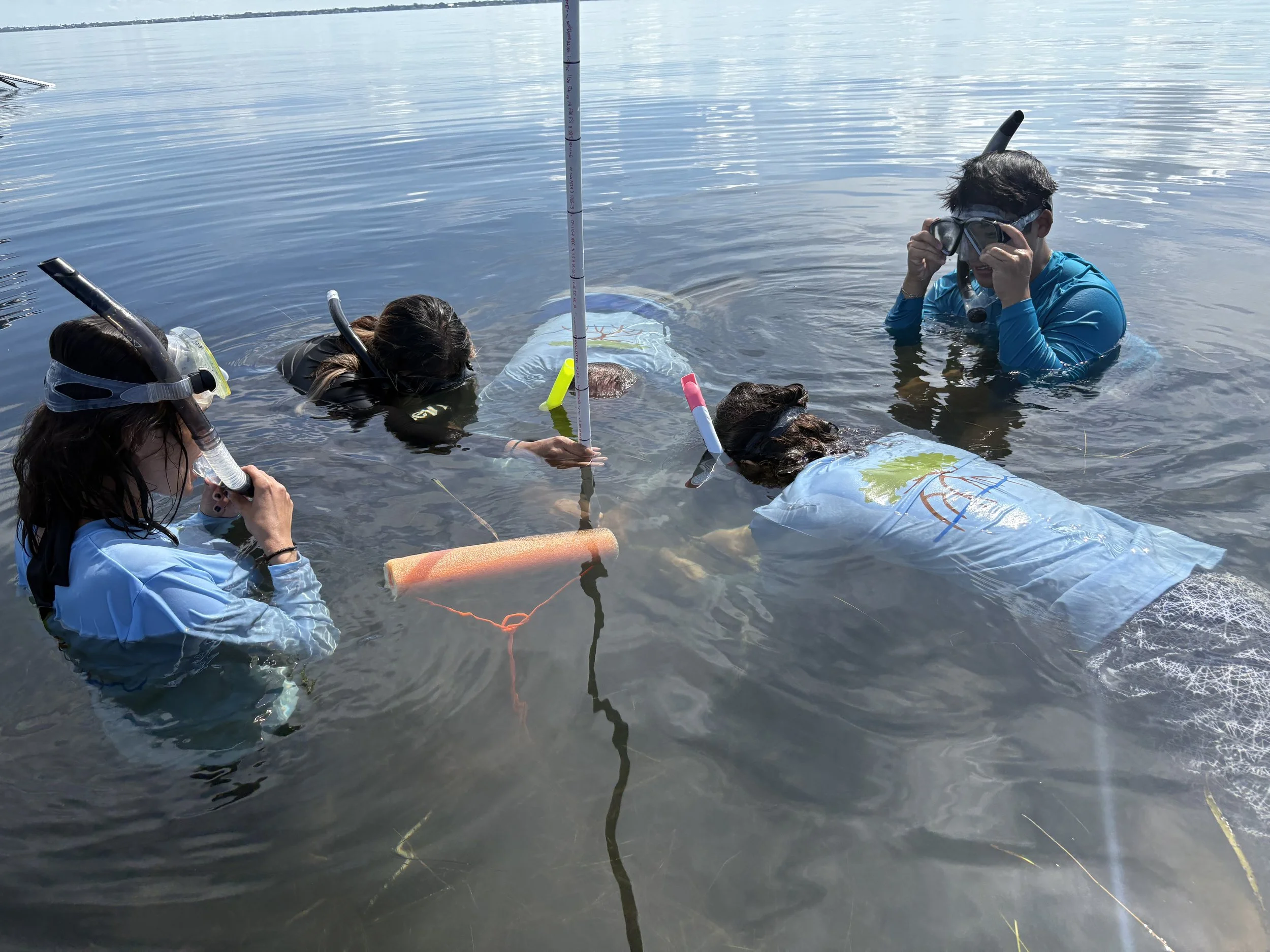Seagrass: The Ocean’s Superhero You’ve Never Heard Of
Fish swimming above seagrass
The Unsung Hero Beneath the Waves
When people picture the ocean’s most important habitats, coral reefs usually steal the spotlight. Their bright colors, bustling fish, and dramatic structures are hard to ignore. But there’s another ecosystem quietly working overtime to keep our planet healthy: seagrass meadows.
Seagrass doesn’t make headlines, but it should. These underwater prairies store carbon, filter water, provide nurseries for countless species (including sharks!), and protect coastlines. In short, seagrass is one of the ocean’s greatest superheroes — and it’s time we give it the recognition it deserves.
What Exactly Is Seagrass?
Seagrass is not seaweed. It’s a true flowering plant that grows in shallow, sunlit waters all over the world. Just like the grass in your backyard, it produces flowers, seeds, and even pollen.
But unlike land grass, seagrass thrives underwater, creating dense meadows that can stretch for miles along coastlines. These habitats are nurseries, feeding grounds, and oxygen factories for the ocean.
Seagrass up close
Blue Carbon: Nature’s Climate Secret
One of seagrass’s most powerful superpowers is its ability to capture and store carbon.
Here’s the science:
Seagrass absorbs carbon dioxide from the water and atmosphere.
Instead of releasing it back, much of that carbon gets locked into the soil beneath the meadow.
These “blue carbon” stores can remain trapped for thousands of years.
In fact, seagrass beds can store up to 35 times more carbon per acre than tropical rainforests. That makes them one of our best natural allies against climate change.
A Nursery for Ocean Life
Seagrass meadows are more than just climate heroes — they’re also baby nurseries.
Sharks: Juvenile bonnethead and lemon sharks shelter in seagrass beds, where they’re less likely to be spotted by larger predators.
Fish: Snapper, grouper, and barracuda spend their early life stages here before heading to reefs or open waters.
Shellfish & Invertebrates: Crabs, shrimp, and clams thrive among the blades, supporting entire food webs.
When seagrass thrives, so does marine biodiversity.
Juvenile sharks above seagrass meadow
Clean Water, Stronger Shores
Seagrass meadows act like giant filters. Their blades slow down water movement, allowing sediments to settle. This keeps coastal waters clearer, which is essential for coral reefs that rely on sunlight.
Seagrass roots also stabilize the seafloor, reducing erosion and protecting shorelines from storm surges. For coastal communities, healthy seagrass meadows are a natural form of insurance against rising seas and stronger hurricanes.
Sea turtle eating seagrass
The Threats Seagrass Faces
Despite its importance, seagrass is disappearing at an alarming rate — estimated at one football field every 30 minutes worldwide.
The major culprits include:
Coastal development and dredging.
Boat propeller scars tearing through meadows.
Agricultural runoff and pollution.
Climate change (warming waters and stronger storms).
When seagrass dies, the carbon it stored gets released back into the atmosphere, worsening climate change. It’s a dangerous cycle.
How We Can Protect Seagrass
The good news is that protecting and restoring seagrass is something we can do — and it pays off quickly.
Boaters: Use designated channels to avoid damaging meadows.
Communities: Support water quality initiatives that reduce runoff.
Scientists & NGOs: Lead restoration projects by replanting seagrass.
Everyone: Spread awareness. The more people know about seagrass, the more likely it is to get funding and protection.
At The Salty Lab, our field research often takes us straight into seagrass meadows. We’re studying how these habitats support sharks and testing restoration methods that benefit entire ecosystems.
Biologists completing a seagrass survey - Featuring TSLRC’s CEO & Founder
Why Seagrass Matters to You
Even if you’ve never stepped foot in the ocean, seagrass still impacts your life. It helps stabilize the climate, supports fisheries that feed millions, and protects coastlines where people live and work.
Protecting seagrass isn’t just an environmental issue — it’s an economic and human one.
The Ocean’s Hidden Superhero
Seagrass may not be as flashy as coral reefs or as famous as whales, but it is just as important — maybe even more. It’s the silent superhero of the ocean, fighting climate change, feeding marine life, and defending coastlines.
The more we understand and protect seagrass, the stronger our oceans — and our planet — will be.
👉 Want to help protect seagrass and the marine life that depends on it? Explore The Salty Lab’s ocean-inspired gear — every purchase funds real seagrass research and restoration.






